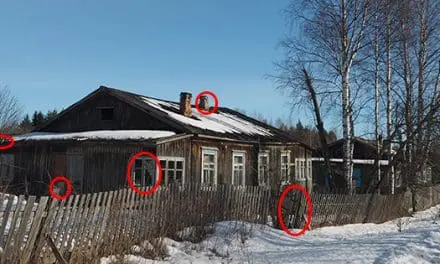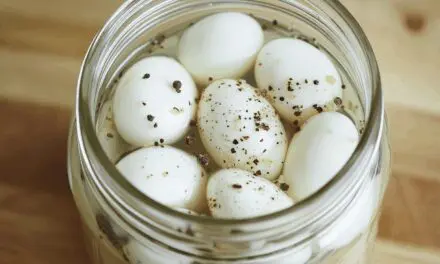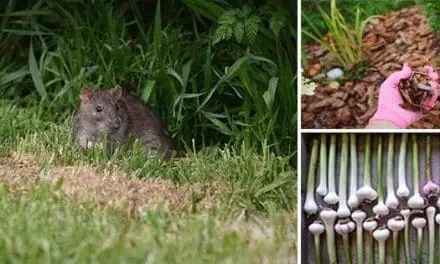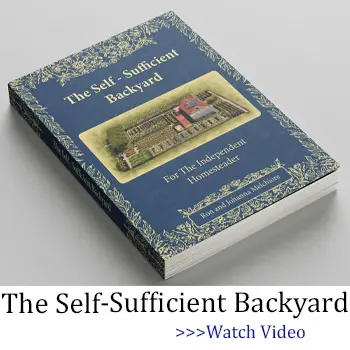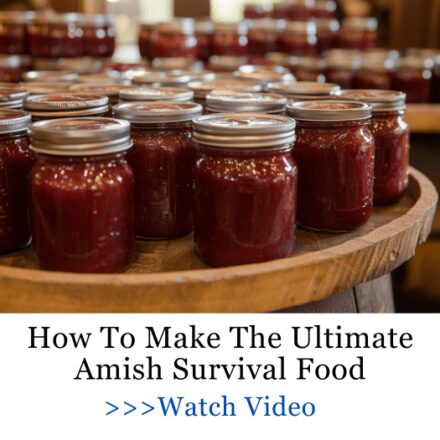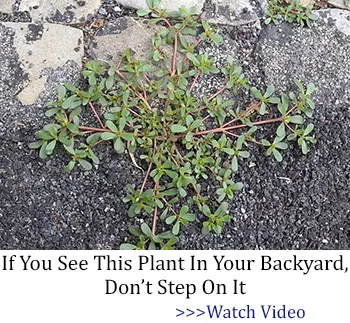You can spend months planting, watering, and weeding…But if you harvest wrong, even just once, all that effort can go straight to the compost pile.
Truth is, most gardeners lose up to 30% of their harvest just because they don’t know when to pick… how to pick… or what to do with the food once it’s in their hands.
Total garden harvesting fixes that.
Let’s break down exactly what total garden harvesting is: the timing, the techniques, and the smart little tricks that make sure you get every last edible bit out of your garden. This will help you make sure every leaf, root, and fruit you grow actually ends up on your plate… not rotting on the vine or wilting in a crate.
It’s Called Stem to Root Harvesting
It may come as a surprise to some, but the way that fruits and vegetables are marketed, sold and consumed in North America is very different from the rest of the world. Grocery stores in North America often present vegetables and especially fruits neatly trimmed, packaged and displayed often without the leaves common to many root vegetables, or leafy vegetables without roots or other parts of the plant.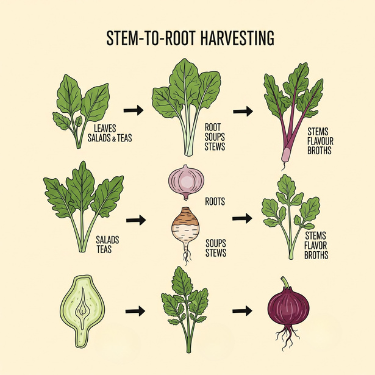
As a result, we treat many fruits and vegetables that way even when we grow them in our gardens. We’ve been conditioned to buy that way and eat that way, and in many cases we just didn’t know the rest of these plants are not only edible, but surprisingly nutritious.
And while we’re rethinking how much of a plant is usable, it’s also worth rethinking what kind of plants we’re growing in the first place. Stocking up on both food seeds and medicinal seeds can be just as important as knowing how to harvest them right.
This way, when everyone pays for antibiotics in gold, you’ll have them growing in your backyard. This crisis-proof seed pack contains one plant for every part of your body – you’ll find a painkiller, an anti-inflammatory, an anti-parasitic, and even some plants that can help people with diabetes and autoimmune disorders. It’s a smart way to grow what you need not just for your plate, but for your health, too.
When access to medicine becomes harder—or just plain expensive—you’ll be glad you planted more than just vegetables.
In many parts of Asia, Africa, South America and even Europe, the display and presentation in markets and grocery stores is much different. The whole plant is offered for sale with all parts intact. And that’s not a clever marketing ploy to add to the total weight of something often sold by the pound. It’s because many cultures eat the entire plant and appreciate the total nutritional value it provides.
The simple fact of the matter is that the leaves of many vegetables have more nutritional value than the featured vegetable. Radishes, carrots and beets are a good example. The leaves have nutritional value and micronutrients on a par or even exceeding the often extolled nutrition of greens like spinach and kale. Better than that, they often taste really good and are typically served in salads, soups and on sandwiches as a regular and natural addition to many meals.
Here are some surprising leaves that we often discard when preparing or cutting up vegetables:

- Turnip leaves, also called turnip greens, are loaded with folates, calcium and antioxidants. They’re best if cooked because more mature plants can have a bitter flavor when eaten raw.
- Daikon radish leaves impart a mildly spicy flavor to soups and stews and commonly appear in many Asian recipes.
- Rutabaga and celery leaves ore often used in stocks or as a garnish. It’s actually hard to find celery in the store with its leaves intact but if you grow your own, don’t toss them.
- Radish leaves, beet leaves and carrot tops are commonly used in soups, stews and salads across Europe, Asia, South America and Africa. For some reason that rarely happens in North America.
About Those Roots and Stems…
The roots and stems of many vegetables that are usually trimmed also bring some surprising benefits.
- Celery root or celeriac is a powerhouse of Vitamin K and phosphorous.

- Broccoli stems are usually trimmed away and either composted or discarded. They’re actually very high in fiber and have more concentrated nutrients than the flowerets. Slice them about 1/8 inch thick and add them to soup or stews.
- The stem and leaves surrounding one head of cauliflower had more calcium then a glass of milk. The stems are good in soups or stews and the leaves can be mixed into a salad or cooked like spinach.
- Burdock which is often thought of as a weed has roots that are both high in anti-oxidants and has significant anti-inflammatory benefits. But that starts to get into wild-foraging a bit so we’ll stop with that one.
- The roots of the parsley plant are another surprise. While we’re using the leaves as a garnish or flavoring agent, the roots are rich in fiber, folates and Vitamin C and are a common addition to Eastern European soups and stews.
- The stems of the dill plant can also be cut into small rounds and added to soups, stews and even fish stocks and fish sauces.
One caution is to not assume all leaves and roots are safe to eat. Leaves, stems and roots from the nightshade family including tomatoes, peppers and potatoes are toxic to varying degrees. That’s why people fry green tomatoes although cooking won’t always guarantee that toxins in other nightshade vegetables will be neutralized. Curiously, sweet potato leaves seem to be an exception and often appear in African and Asian cuisines presenting both antioxidants and iron.
➡️ How To Make A Scalable Self-Sustaining Greenhouse
And Then There’s the Seeds
Some of us take the time to harvest seeds at the end of the season to replant for next year. That’s a good idea. But the seeds can not only be saved and replanted, but also eaten and used as a flavoring garnish for salads, soups, fish and just about anything else you cook. Some of them also make great snacks.
It’s no surprise that pumpkin seeds (high in zinc and protein) can be salted and roasted, but there’s so much more. Here are some examples:
- Watermelon seeds can also be salted and roasted and are rich in magnesium, iron and omega-3 fatty acids. In many cultures they’re a popular snack so maybe it’s time to say “no” to those seedless watermelons.
 Papaya seeds have antibacterial properties and when dried and ground as a spice make a surprisingly good pepper substitute.
Papaya seeds have antibacterial properties and when dried and ground as a spice make a surprisingly good pepper substitute.- Seeds from pepper plants can be a great way to add spice to a recipe when blended into sauces or used as a garnish. And they can be used raw, dried or roasted.
- Cantaloupe and honeydew melon seeds can be salted and roasted just like pumpkin seeds.
- Carrot seeds are used as a spice in many cultures particularly in Africa and Asia
- Radish seed pods can actually be pickled and eaten as a delicate snack.
One caution is to not assume all seeds are safe. Here are some seeds to avoid eating!
- Apple seeds
- Pear seeds
- Cherry seeds
- Apricot seeds
- Peach seeds
- Plum seeds
- Castor seeds (deadly and contain ricin)
- Lychee seeds
- Raw kidney beans
- Loquat seeds
- Raw elderberry seeds
- Ackee seeds
Many of the above seeds actually contain traces of cyanide, so it’s wise to just skip those. And as far as castor beans are concerned, they contain ricin, one of the most powerful poisons on the planet.
But Many are Safe
In actual fact, we often consume the seeds of many vegetables without thinking about it, including tomato seeds, zucchini and cucumber seeds. Many are rich in lycopene and fiber, so don’t be too anxious to strip those seeds away.
Then again, numerous seeds are commonly used as a spice, including dill seed, mustard seed, fennel seeds, coriander seeds (cilantro), celery seeds, caraway seed and others. The point is that if the seeds are safe, they could add flavor and nutrition to many dishes.
What You Throw Away Could Feed Your Family in a Crisis
Carrot tops. Beet greens. Herb stems. Most people throw them away.

But that’s how survival slips through your fingers—one wasted leaf at a time.
When the grid fails or food prices hit impossible highs, the scraps you overlooked could’ve fed your family. The Amish never threw them out—and they’re still thriving off techniques modern life forgot.
Because when it’s too late to learn, it’s already too late to act.
The Amish Ways Book reveals what they’ve quietly preserved for generations—not trends, but survival knowledge:
🌾 While others panic and stockpile cans, the Amish quietly preserve independence.
If you think you’ll just “figure it out later,” you won’t. You need this now—before shelves go empty, or your garden spoils in your hands.
👇 Grab the Amish Ways Book today—before this page disappears or the next crisis hits.
It’s Time to Experiment
The next time you go out the garden to harvest, don’t be too quick on the trigger to the compost heap with those discarded leaves, roots and stems. Take some time to learn more and even find some recipes that can not only maximize your harvest, but add surprising nutrition to every meal.
No Seeds Needed! How to Grow Tomatoes from a Single Slice
A Walgreens Is Opening In Your Backyard (Video)
Gardening Myths That Are Actually True



 Papaya seeds have antibacterial properties and when dried and ground as a spice make a surprisingly good pepper substitute.
Papaya seeds have antibacterial properties and when dried and ground as a spice make a surprisingly good pepper substitute.


